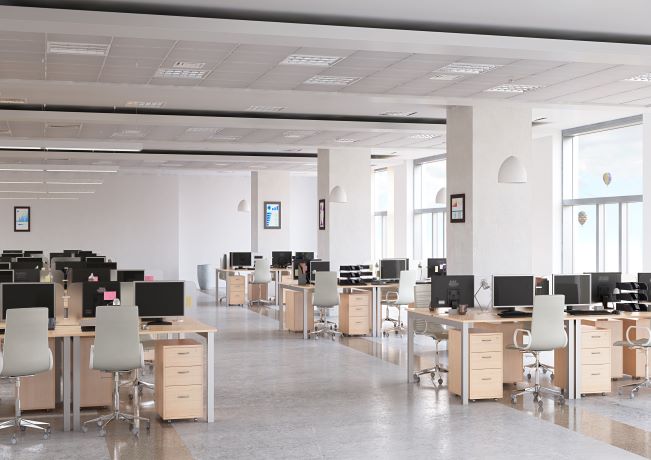How might a typical office worker feel the first time they set foot in their old workplace once the coronavirus lockdown ends in their area — whenever that turns out to be?
Assuming that offices start opening sometime before there’s a COVID-19 vaccine, that worker is likely to feel more than a little nervous, even if that apprehension is mixed with a sense of relief and even joy to be back out in the world again. So what steps will enterprises need to take in anticipation of people coming back into their offices?
This
article from design firm Gensler offers a list of practical steps that facilities managers will have to take. Among other things, the author suggests that some of the latest trends in workspace design will have to be severely curtailed, if not eliminated. For example, employees will be loathe to share desks and other high-touch office elements, which means hoteling will be more complicated, if not impossible, to implement or continue with post-pandemic. Indeed, the trend of cramming workstations closer together runs directly counter to the distancing protocols that likely will remain in effect in some form until there’s a vaccine. The article also suggests facilities will require upgraded air filtration systems and deeper cleaning as best practices.
These measures will make offices more expensive to operate, so you have to expect that many enterprises will be reluctant to re-open those offices that require the greatest amount of COVID-19-related retrofitting. In general, it seems likely that the bias will be against sending people back into offices where it can be avoided.
We’re already seeing such indications. Almost three-quarters of CFOs plan to shift at least some newly-remote workers to permanent telecommuting status, according to Gartner’s newly-released CFO survey. In its press release on the survey, Gartner painted a picture of enterprises shifting investments — including technology spend — away from the office:
In Gartner’s most recent survey, 20% of respondents indicated they have deferred on-premise[s] technology spend, with an additional 12% planning to do so. An additional 13% of respondents noted they had already made cost reductions in real estate expenses, with another 9% planning to take actions in this area in the coming months.
The longer-term picture is more uncertain. Once a vaccine is in place, more people may want to work in offices again. Being together with colleagues all day provides opportunities for collaboration and innovation that even the best remote-access technologies can’t match.
But with the future so uncertain, I wonder whether top leadership will really want to build long-term strategic plans that target a return to substantial office usage. Instead, they may well focus on the shorter-term risks of offices, coupled with the shorter-term rewards of saving money by keeping workers at home even when they could be going out again.
Maybe “healthy offices” will be the next hot trend among design professionals, but this will only be a compelling concept if businesses find they simply can’t do without offices in the first place.





